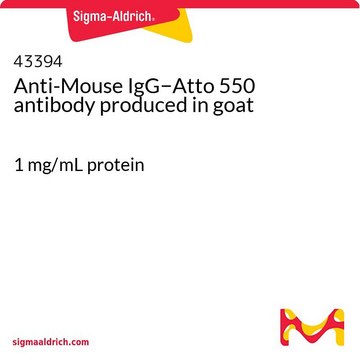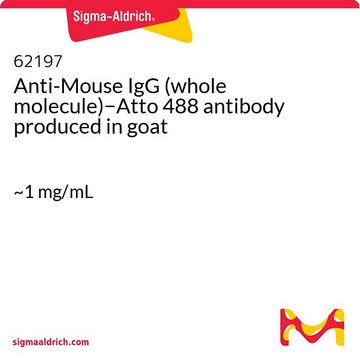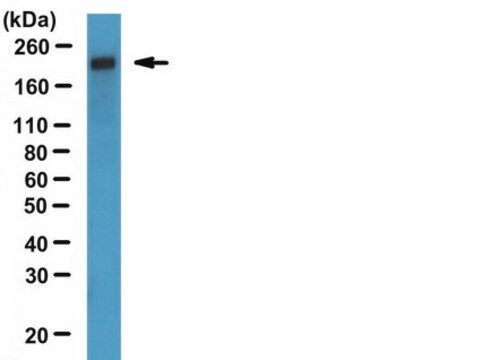43328
Anti-Rabbit-IgG - Atto 550 antibody produced in goat
Synonym(s):
Atto 550-Anti-Rabbit-IgG antibody produced in goat
About This Item
Recommended Products
conjugate
Atto 550 conjugate
Quality Level
antibody product type
secondary antibodies
clone
polyclonal
form
liquid
contains
50% glycerol as stabilizer
species reactivity
rabbit
concentration
1 mg/mL protein
technique(s)
immunofluorescence: suitable
fluorescence
λex 550 nm; λem 576 nm in PBS
shipped in
wet ice
storage temp.
−20°C
target post-translational modification
unmodified
General description
Immunogen
Application
Atto 550-goat anti-rabbit-IgG has been used for immunofluorescence applications.
Physical form
Analysis Note
Legal Information
Disclaimer
Not finding the right product?
Try our Product Selector Tool.
Storage Class Code
11 - Combustible Solids
WGK
WGK 1
Flash Point(F)
Not applicable
Flash Point(C)
Not applicable
Personal Protective Equipment
Choose from one of the most recent versions:
Already Own This Product?
Find documentation for the products that you have recently purchased in the Document Library.
Articles
Immunoblotting (Western blot transfer) is a common technique in modern proteomics research.
Our team of scientists has experience in all areas of research including Life Science, Material Science, Chemical Synthesis, Chromatography, Analytical and many others.
Contact Technical Service




